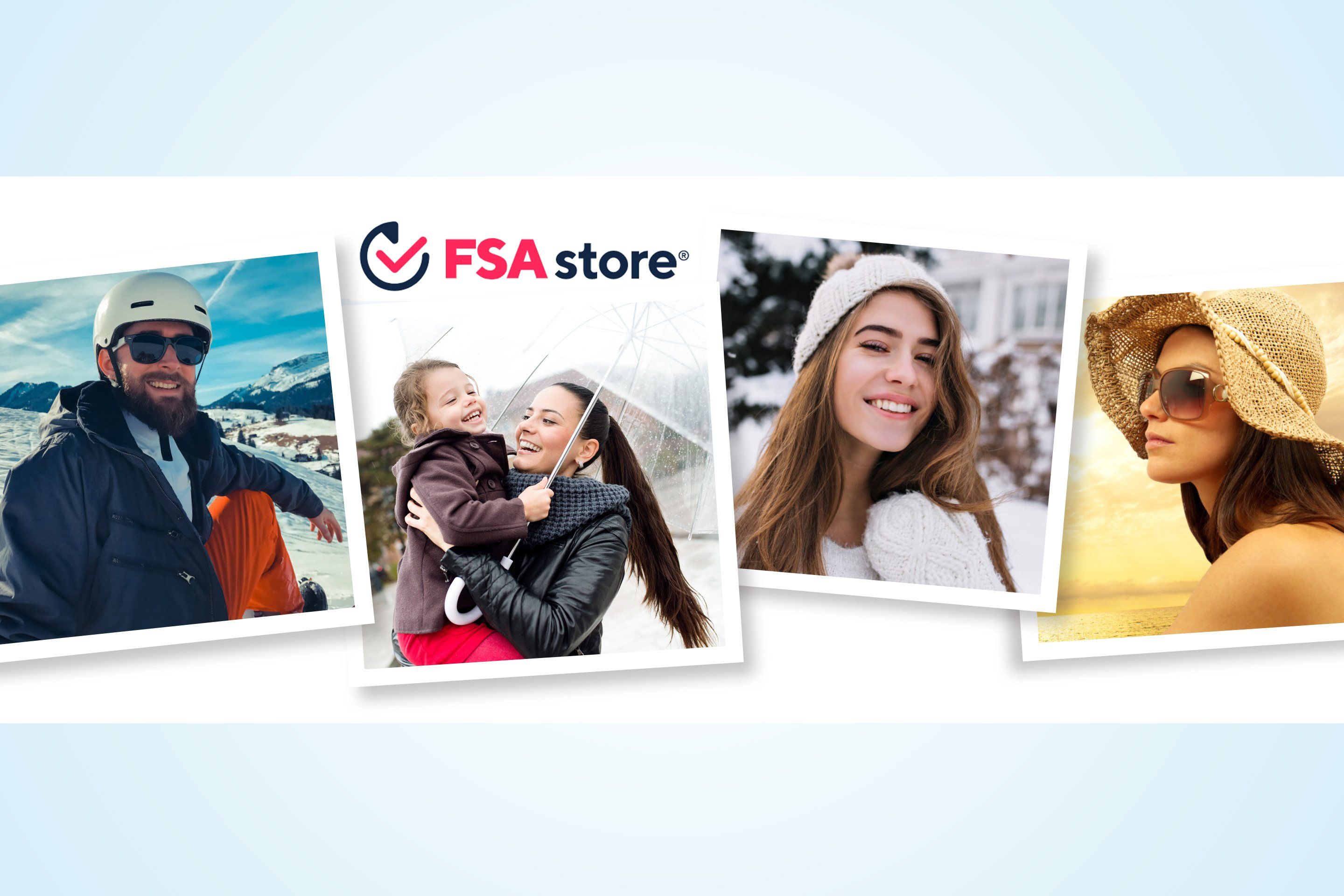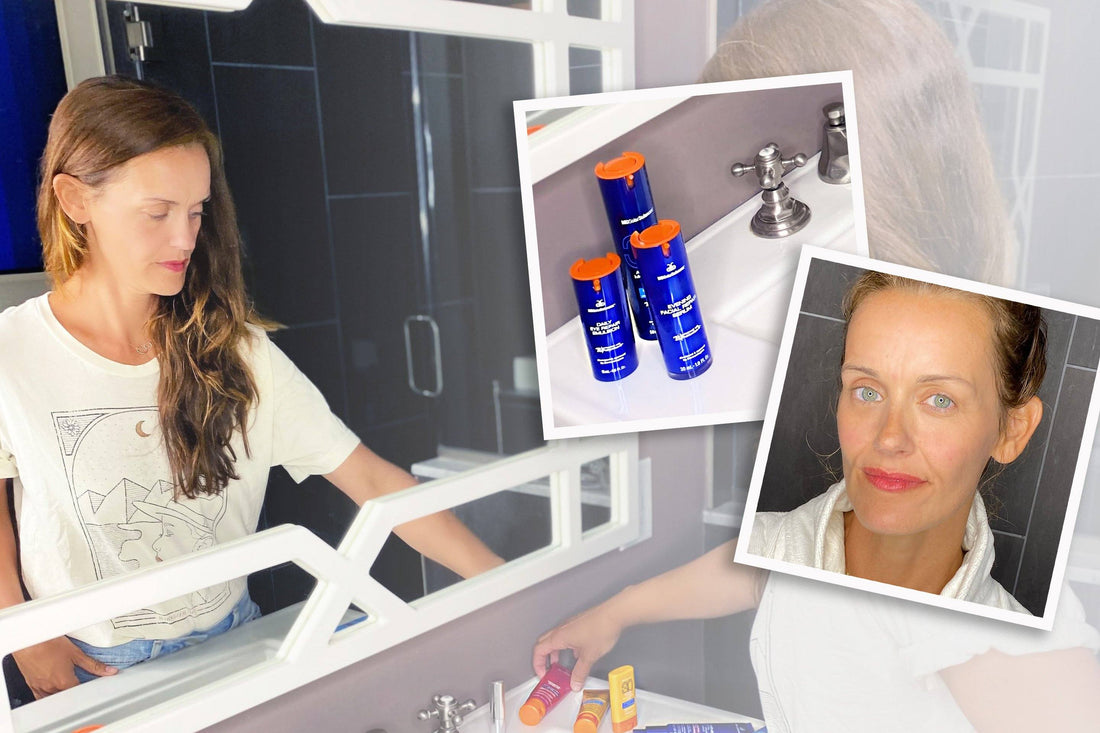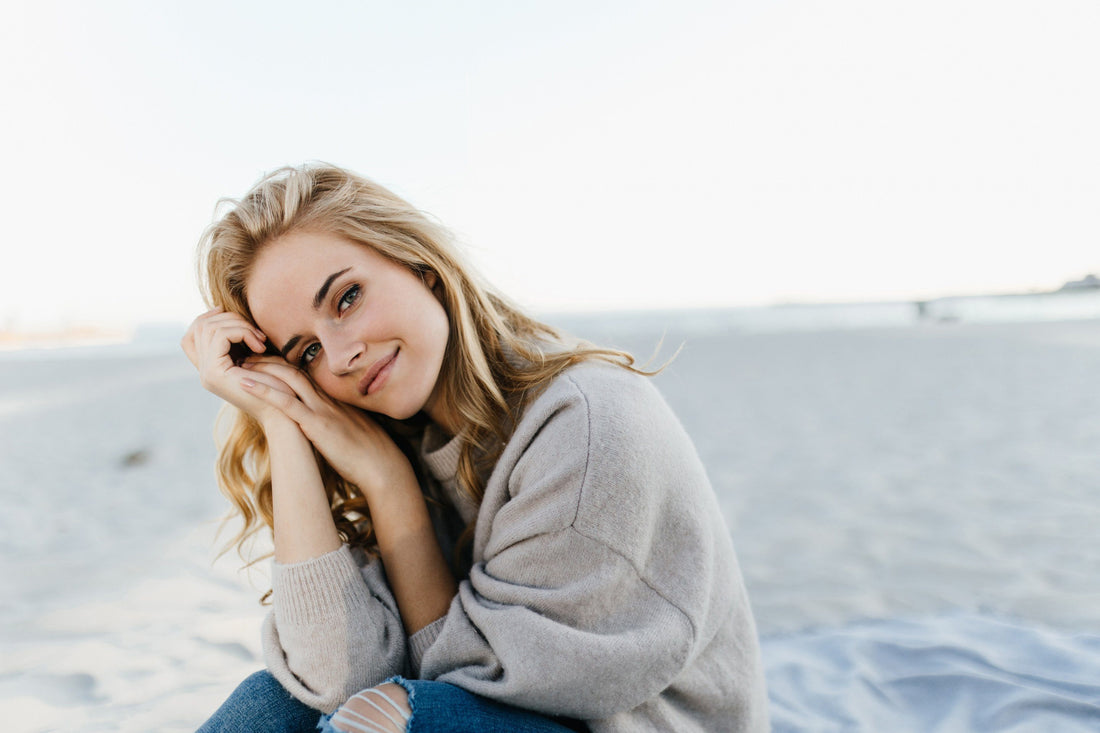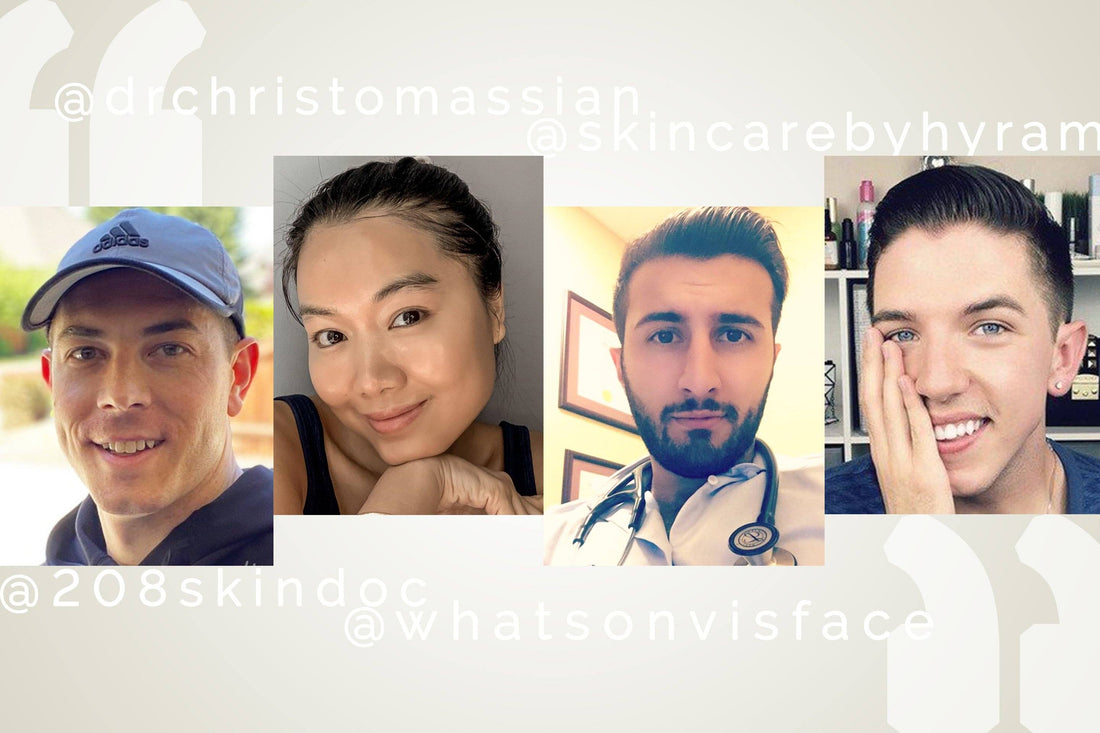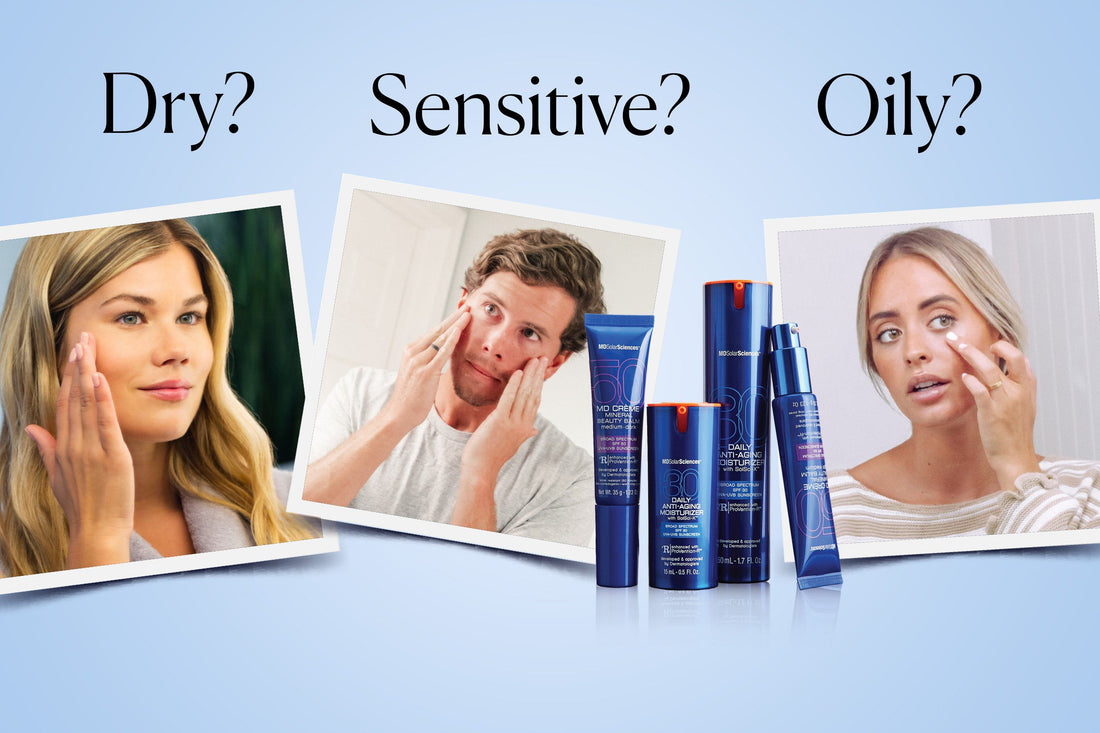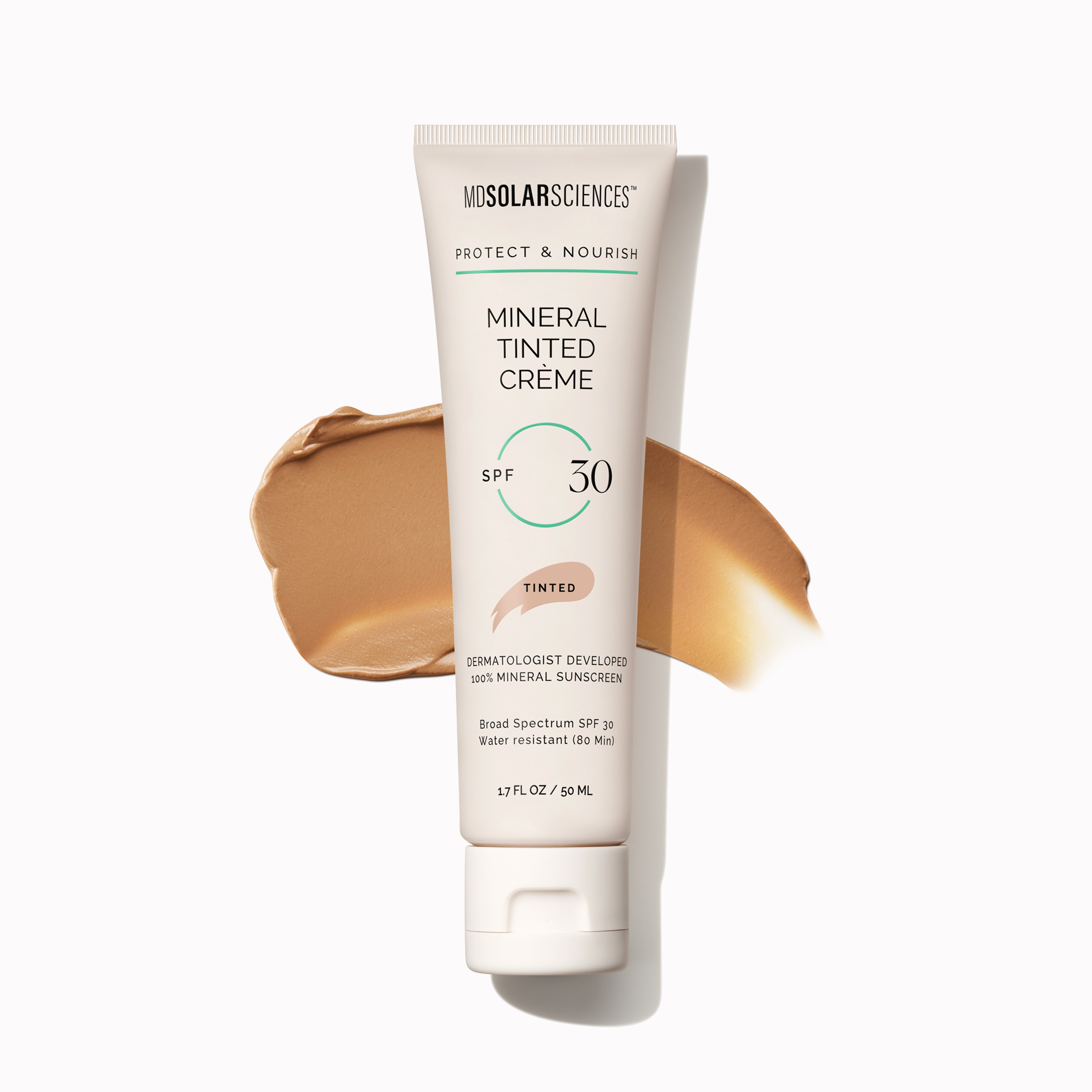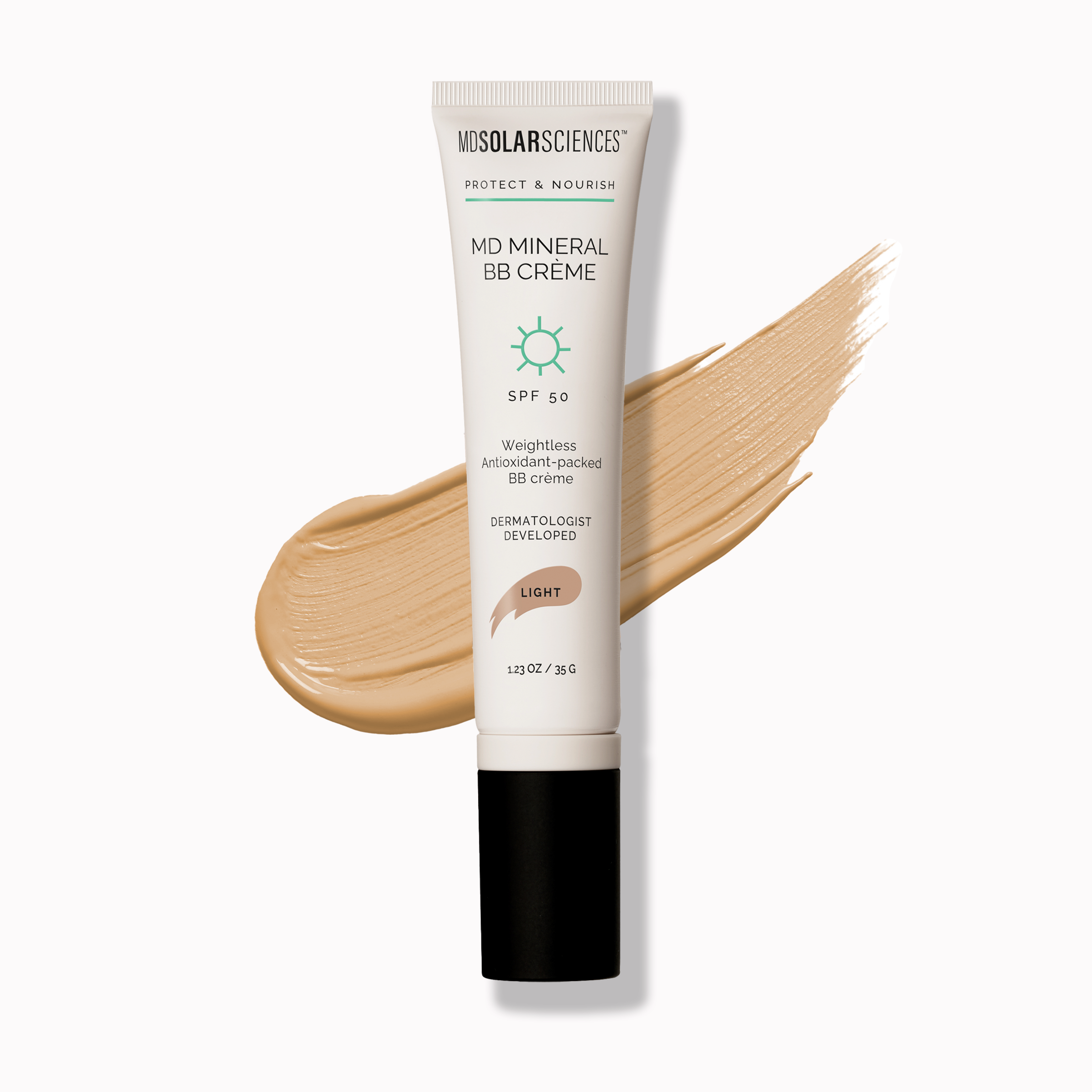Blog: Everything Under the Sun
Simple Skin Care Steps to Take Every Day
Ever since quarantine started it’s been tough to find the motivation to put on a cute outfit, let alone apply makeup, or take proper care of our skin. But the truth is, we all know that taking care of our skin is important. So today we’re helping you get back on track--starting with the basics. After all a proper skincare routine can change everything (including helping us feel more put together). Now the first thing you need to know is that there are some key differences between your evening and morning skincare routines. These subtle changes can transform your skin. Read on to learn more about distinguishing your evening cleanse from your morning face routine. Skin Care Steps to Take Every Night After a long day you (and your skin) have both gone through a lot. While you’re navigating virtual learning and zoom conference calls your skin is fighting off exposure to the elements - from dry air, to dirt, uv rays, and other environmental factors. But this is where beauty sleep comes in - while you’re catching some zzz’s your skin starts rebuilding itself. Overnight it works to generate collagen and repair sun damage. Your pre-sleep beauty routine can actually help this nighttime recovery process. Here’s what you need to know: always take care of your most delicate skin – the area around your eyes. We love using our fragrance-free MD Restore Eye Gel because its formulated with a blend of collagen repair peptides and antioxidants. Plus, it supports skin’s overnight renewal by working to reduce the appearance of puffiness, dark circles, fine lines, and wrinkles (aka it helps you wake up looking totally refreshed). To apply, place product on the tip of your ring finger. Why? It’s naturally your weakest, which makes its application a touch more delicate. But what about the rest of your skin? Our go-to treat is a serum, specifically the MD Revitalize Retinol Serum. The lightweight formula helps restore your skin's radiance and keeps your complexion bright. The secret ingredient is one you hear about often—retinol. A powerful form of vitamin A, retinol helps boost collagen, plump skin, and reduce the appearance of fine lines and wrinkles. It also can help combat hyperpigmentation and redness. Our formula is super gentle, so it’s great for those with sensitive skin or anyone who’s new to using retinol. Want to give your skin even more help? Focus on combatting nighttime dryness. From midday well into the evening, your skin goes through something called transepidermal water loss where it slowly dries out due to the absence of natural oils. Hydrating your skin pre-sleep helps minimize that. We love using the Skin Savior Multi-Tasking Wonder Balm by One Love Organics. Your Morning Skin Care Routine After a good night’s rest, it’s time to prep your skin to face the day. These simple skincare steps can change the game. First up – make sure you wash your face. The reason? While you sleep your skin can actually accumulate a buildup of debris – ranging from dead skin cells, to allergens in the air. We love Cerave’s gentle formulas, which are available in different variations based on your skin type. Next – it’s time to moisturize. Start once more, with your eyes. Our pick is the MD Solar Sciences MD Restore Eye Gel. The super smooth formula protects your most sensitive skin and gives it a firmer, more elastic appearance all while reducing puffiness, dark circles, fine lines and wrinkles. Then it’s time to care for your face. Our Daily Perfecting Moisturizer SPF 30 is a fan-favorite, and for good reason. It hydrates skin while protecting it from the sun’s harmful rays. The lightweight lotion boasts anti-aging benefits and contains time-released humectants that keep your skin hydrated all day long. Plus it contains a kick of caffeine to help reduce the signs of UV-induced damage, keeping your skin . Now technically, you can wrap things up after moisturizing. But if you need a little something extra – you’ve got options. Rather than defaulting to a heavy foundation consider using a tinted moisturizer (like our Mineral Tinted Créme SPF 30). These formulas are lighter weight and tend to not be as heavy on the skin. Ours contains SPF and is enhanced with skin-supporting ingredients like antioxidants, vitamin C, and green tea. Plus, it’s great for those with sensitive skin, thanks to a gentle formula that’s rated as a one with . Finish off your look by giving your pout an extra pop. Our Hydrating Sheer Lip Balm SPF 30 offers a rich hydrating formula (thanks to shea, avocado oil, and olive butter) and gives lips a soft tint, while protecting them with SPF 30. Want to learn more about how to apply products from morning to night? Check out this video.
Learn morePregnancy, Motherhood & Skincare
A few months ago, we reached out to Jayme Squires to collaborate on Kid content. We loved the look and feel of her Instagram (make sure you follow her to see what we are talking about)! Originally, we sent Jayme our Kid products - KidCréme SPF 50 and KidStick SPF 40. She wanted to get a chance to test them, look at the ingredients and experience how they worked. We knew Jayme was expecting and busy with a toddler. We added a few goodies to our package, including our new Hydrating Sheer Lip Balm SPF 30 and our best-selling MD Mineral BB Créme SPF 50. When Jayme connected with us a few weeks back, she said she was ready to share some content, and it turned out it was all about the Skincare product we sent along… I think we can say that she fell in love with our Beauty Balm. During pregnancy, your skin can become more sensitive to the sun with some women developing the ‘mask of pregnancy’ or melasma. It is very important to protect your skin from the sun to avoid this or the development of any dark spots. And since you want to be on the safe side, dermatologists tend to recommend a mineral or physical sunscreen. This is because mineral or physical sunscreens sit on top of the skin and do not penetrate it. You also want to select a product that has a Broad-Spectrum formula blocking both UVA and UVB rays; and choose products that have an SPF of 30 or higher. Jayme has freckles and has a tendency to get melasma so she was interested in a product with SPF that would help her prevent these pregnancy side effects. As a busy new mom, any shortcuts and timesavers are greatly appreciated! MDSS’ Beauty Balm is a tinted BB crème with SPF in a formula packed with amazing ingredients that help improve the quality of skin over time. Instead of using 2-3 products, use Beauty Balm and you’re done, giving you back more time to spend with your little ones or some precious ‘me time’! This might be why Jayme enjoyed using Beauty Balm so much 😊. Here’s how it works: Beauty Balm comes in 2 universally flattering sheer shades that blend in seamlessly, priming skin perfectly and giving you the option to add makeup or go without. Add blush, mascara and lip tint and you are ready for the day (or night). It’s packed with antioxidants including CoQ10 and Green Tea to help fight free radicals. It contains Niacinamide and Caffeine, 2 ingredients known to help calm and repair skin, and suitable for all skin types. It also includes Squalane, a lightweight moisturizer that has anti-inflammatory properties. As Jayme put it recently:To follow Jayme, head to @jaymesquires. To learn more about how to pick Sunscreen for Kids, check out our blog post based on our Instagram Live with Dr Britt Craiglow, Pediatric Dermatologist.
Learn moreDifferent Types of UV Rays
UVA, UVB, & UVC Let’s talk Solar facts! Ever imagine how something so far can affect us all? The Sun emits sunlight in a form of rays that reach 150 million kilometers from the Earth. Sunlight gives out ultraviolet (UV) radiation that poses different effects on our skin and we’re gonna tell you all about the ABC’s of UV. The “A” in UVA stands for “Aging” Ultraviolet Aging (UVA) rays have the longest wavelengths out of all the three. It accounts for approximately 95 percent of the UV radiation reaching the Earth's surface according to the World Health Organization (WHO). Since UVA rays are highly penetrative, they can get into the deeper layers of the skin and can contribute to premature aging. The “B” in UVB stands for “Burning” Ultraviolet Burning (UVB) rays have Medium-wavelength and account for 5% of UV radiation reaching the Earth's surface. UVB rays can only reach the skin’s surface. It may not be as highly penetrative as UVA rays but long exposure to them can make as much damage. UVB rays are mostly responsible for sunburns and may have a delayed effect with long-term exposure that may even cause skin cancer. The “C” in UVC stands for “Cataracts” Ultraviolet Cataracts (UVC) rays have the shortest wavelengths and highest energy levels of the three types of UV rays. This means that it can cause serious damage to all life forms. On the bright side, UVC radiation is all filtered-out by the ozone layer and these rays from the sun never reach the ground. However, man-made sources of these rays do pose damage ranging from severe burns of the skin to eye injuries. Hence, staring at the sun too long may give you cataracts or permanent blindness. Knowing these ABC’s, how can you protect yourself? Avoid long-term exposure to the sun! It’s nice to soak up vitamin D every once in a while, but too much may be too bad for you. Keep your skin protected by covering up with some light-clothing and pair it up with your favorite sunglasses and hat! Also, remember to soak up on Sunscreen with the right amount of sun protection factor (SPF). Here at MDSolarSciences, we stand behind our science-backed formulas that were developed by dermatologists and continue to be recommended by some of the top skincare experts in the country. Check out our blog Skincare Routines to know the best routine depending on your skin type!
Learn moreSunscreen for Kids
What you need to know when picking SPF for your kids…. and more! A few weeks back, we presented an Instagram Live with Dr Britt Craiglow. She is a widely recognized expert in pediatric dermatology. She has authored over fifty publications, speaks at national and international conferences, and has served as an investigator on numerous clinical trials. She practices in Fairfield, CT if you are lucky enough to live in the area. You can also find her on Tik Tok @dermdrbritt. We loved our Instagram Live with Dr Britt so much that we decided to turn it into a blog. If you prefer to watch the IG Live, head over to Instagram, the episode is saved in the IGTV icon. Why is Sunscreen important to you? My kids get the importance of sunscreen (4 and 6). From the beginning, we have been very rigorous about skincare. Last year, I realized how much. My then 4-year old came to me and said ‘can you get my Legos from the driveway’ and I asked him why he could not get them himself. He replied ‘I don’t have sunscreen on!’ Maybe we have done too good of a job!! One of the things I tell parents is to ‘make it part of your routine from the beginning’. My kids know we don’t go out or play outside without protection, sunscreen, a rash guard. Now that they are older, I let them participate, choose the one they want to use, put it on themselves. It’s really like wearing helmets on a ski slope, no one did that when I was growing up. Now everyone wears a helmet skiing. And same thing for sunscreen. It’s what their friends do too, so it’s easier when they do what their friends are doing too. Wear sunscreen, a hat, a rash guard. As a dermatologist and a mom, what is the key thing to look for when picking out SPF for kids? My number one rule is “The best sunscreen is the one they will wear!” As dermatologists, we like sunscreens that are at least SPF 30 or more, that is water resistant and in general, for kids, I prefer physical blockers or mineral blockers which contain zinc oxide or titanium dioxide. I often say look for zinc and/or titanium and you will be ok. I don’t love the aerosol sunscreens because the application may not be sufficient. People should use the equivalent of a shot glass of sunscreen to cover their whole body. What do you recommend for a beach day with kids in terms of clothes/bathing suits? I love rash guards or long sleeve UPF clothing. The more you can cover with clothing the better. Make sure they wear a hat as the scalp is a place we see a lot of skin cancer in older patients. Rash guards or full-on suits for littler kids. And make sure to reapply every couple of hours and on the important areas – top of the ears, back of the hands, feet, behind the knees, you want to cover every square inch of exposed skin. Sticks or Crème? My boys like the sticks a lot, especially for the face. You need to make sure you cover every square inch. They are great for getting the nose. The crèmes can feel nice too if they are well engineered like MDSolarSciences’. Any tips for application on kids? The earlier you start and make it part of your routine, the more they get used to it. I also like to tie something to it, ‘when you have your sunscreen on, you can do ____.” Also let them participate, choose where to put it on first, give them a little control over the situation. Or put a big blob on their face and take a funny picture. Once you get through the younger years, it becomes relatively easy, especially if they have something they want to do afterwards – go to the beach, to the pool, play outside… However creative you have to be, make it happen, make a little game of it – you can use a beauty blender if you want, that can be fun. I have had multiple skin cancers so our family does not stay out on the beach for hours, but it’s hard when they are having fun to remember to reapply. It’s important to reapply every 2 hours or if they have been in the water for a long time, or are sweating a lot. Always err on the side of caution for reapplication. Why physical over chemical sunscreen? There is a lot in the media about chemical sunscreen and the jury is still out over safety data. There are studies that suggest that chemical sunscreen can be absorbed into the blood stream, but keep in mind that in these studies, people used a lot more than is typical. But in general, something sitting on the surface of the skin is probably safer, so that is why we tend to prefer mineral sunscreens, especially for babies and toddlers. Why start them young? Starting sunscreen young is the best anti-aging tool. Also skin cancer happens. I got too much sun as a kid, I am very fair and would get tanned in the summer. A lot of the damage is done in childhood. Also, when you are young, you don’t think about what your skin will look like later, so we are here to remind them. Toddlers, elementary school age kids are getting a much better sunscreen message than before. For teens, talk about it as something that is essentially skincare. When you are 50 and if you did not use sunscreen, you will not be happy. Is skin more fragile when you are a child? For sure, an infant or young toddler, especially babies, are more susceptible to sun damage. Every skin type needs sunscreen, we recommend it for any skin type, even if you don’t burn, you might get skin cancer and aging happens to everybody. What do you recommend to parents of kids with very sensitive skin or eczema? For them, physical blockers for sure. Trying to find products that have fewer ingredients. Some additives can be irritating. Usually winter is the worse for eczema but some get worse in the summer when they get sweaty. In the summertime, I recommend more frequent bathing because there are more irritants, also to remove sunscreen at the end of the day. For teenagers, what are some of the best ingredients for acne prone skin? Or rosacea type skin? Again, generally less is more. Some suncreens like MDsolarSciences' contain anti inflammatory ingredients like Niacinamide which has added benefits. Biggest recommendations for teenagers? Tips for better skin in the future? Skincare is very trendy. Everybody gets their skincare tips from Hyram and Tik Tok. Some of my patients ask me if they should have a skincare routine. If you are a teenager and have great skin, you may not need to have a multi step skincare routine. If you cleanse, moisturize and apply sunscreen, you are probably fine. Also, just because something works for your friend, it might not work for you. Stay away from peer pressure and do what is best for your skin. Most common issues you see in kids and teens skincare? Most common things I see in little kids is atopic dermatitis (eczema). Very common in babies. It tends to improve over time. For them, my recommendation for skincare is to be gentle. Less is more. Natural or organic formulas may have a lot of plant-based additives that can be irritants. Minimize irritants. Use a soap free cleanser, make sure you moisturize. For teens, acne is the #1 issue. I try to get a sense of how much it bothers them. The most important thing is matching them to the right product or treatment, as they might be using a product that does not work for their type of acne. Also, they may be spot treating and that is not enough. You also need to be patient, you need a good 2 months of treatment to see long term improvements.A lot of acne treatments make you more susceptible to the sun, so you need to be more careful if you use topical retinoids, Accutane, etc. Adding sunscreen is so important. Teenagers don’t want to look like they have sunscreen on. That’s why I love products like the Mineral Tinted Crème SPF 30 from MDSolarSciences because it does not look or feel like sunscreen. If you have acne scars that are pink or red, sunscreen is the best thing you can use. What are your thoughts on removing sunscreen at the end of the day? Double cleansing is definitely trendy. I don’t double cleanse, I don’t have time! Cleansing is a place where you can save money, splurge on sunscreen, Vitamin C serum, but not on cleansing. People are using micellar water, that can be very effective. If you wear a lot of makeup, that could be a good start. With kids, you can just use a cloth to help remove the sunscreen in the bath. But it’s totally ok if a little bit is left on the skin. KEY TAKEAWAYS: KIDS• Start them young, make it fun• Prefer a physical/mineral SPF blocker TEENS• Keep it simple – cleanse, moisturize, protect with SPF• See a dermatologist if you are dealing with recurring acne EARLY 20s and beyond…• Once you hit 25, the top 3 things to do for your skin are:• Sunscreen, Sunscreen, Sunscreen!• Add a retinoid to your routine (introduce it slowly + use SPF)• Anti oxidants (Vitamin C) IN GENERAL• Find a product with SPF that feels good to wear• Find a routine that works for you• Ask yourself, Is it effective and how does it feel? To learn more about our Kids' formulas, check out this blog.
Learn moreWinter Skincare Routine
10 tips for a successful transition from Summer to Fall and Winter skincareAs we move into the colder season, everyone starts talking about changing your skincare routine, and how to adjust to the change in weather. But what does this mean? Here are 10 easy tips to help you successfully transition to a colder weather skincare routine, and keep that summer glow all winter long! 1. Time for a fresh start – after the summer months, time for some good exfoliating, especially if you have been too busy to do it regularly over the summer. Pick your favorite exfoliators and get rid of those dead skin cells to help your skin recover.2. What is your main goal? Did you abuse your skin this summer, do you need to help your skin recover from too much sun? Or is it more about adjusting to colder and dryer temperatures? Taking inventory of your skin’s needs will help you pick the right additional treatments (serums, masks). It might make sense to schedule a visit with your dermatologist to get an expert advice so that you can build the best routine for your skin type. 3. Cleansing is essential, especially if you use SPF every day (as you should!). Make sure you continue to cleanse regularly at night. Depending on your skin type, consider switching to a gentler or less drying cleansing routine (cleansing balm, oil or milk are good options). 4. Don’t skip the toners! They play an important role in your evening and morning routine. Make sure your toners are not too drying. 5. Serum extravaganza! It’s become so easy to find a serum that fits your specific skin’s needs. It is also easy to combine several serums for optimal results. Do your research, review blogs, see some of our favorites below. Our MD Revitalize Retinol Serum is a great option to add Retinol to your routine, combined with calming ingredients that will help rejuvenate your skin overnight.6. Moisturizer, lotion or gels? Yes to all, this will depend on your skin type and preference. It is best to have a different Day and Night Moisturizer. It’s very likely that you will need to switch to a richer moisturizer in the winter months, or maybe add a richer night cream, and stick to the same day moisturizer. Or you could add a more hydrating serum at night. If your skin is well hydrated at night, you might be able to use the same daily moisturizer you used in the summer. 7. Make up, foundation, tinted moisturizer? Once your summer glow is gone, you have many options to choose from. Here too, you can get a more or less moisturizing or covering formula. Check our Mineral Tinted Crème SPF 30 or our MD Mineral BB Créme SPF 50 as great options with built-in SPF. 8. SPF… did someone say SPF? While there are less UVA rays in the winter months (the ones that cause sun burns), the sun is still powerful enough to damage your skin, and there are actually more UVA rays, the ones responsible for skin aging. Remember that it’s not just about the red burn you get after being exposed to the sun, but more about the long term skin aging process you may not notice every day… wear SPF 😊 9. Chapped lips? Reach for your favorite Lip balm. We are partial to our new tinted lip balm with SPF 30, packed with rich natural oils and butters, vegan formula, with just the right amount of sheer tint. 👄10. Self Care Sunday. Don’t skip it. Get a hydrating mask, take care of the delicate eye area, go a day without make up, drink cucumber water or a hot tea, close your eyes and breathe. 2020 is almost over! Now if this feels like too much, stick to the basics: cleanse, moisturize and SPF with good quality products. Like in other areas of life, quality will outlast quantity. Check out our blog on Skincare routines by skin types to pick the products that will work best for your skin. And don’t hesitate to email info@mdsolarsciences.com with any questions.
Learn moreTik Tok Skincare
June, 2020 You may have read an article or two about Hyram, the new face of Skincare. Hyram is a Youtube and Tik Tok sensation and self professed "skincare junkie"! In a few months, he has gained millions of followers on these two social media platforms. He is shy of a million followers on Instagram, has 3 million subscribers on Youtube and…. is almost at 6 million followers on Tik Tok. In April 2020, Hyram came across our MDSolarSciences Mineral Crème SPF 50 and made us blush with his amazing review on Youtube. Here are a few highlights, check out his full video at the link below: MDSolarSciences Mineral Crème SPF 50 in a nutshell… “When I looked at the ingredient list, I was so impressed because it’s fragrance-free, it’s formulated with 17% zinc oxide which is very high and it claimed to have a matte finish” If we had to summarize our Mineral Crème SPF 50, this would be a great quote. Mineral Crème SPF 50 does have a great ingredient list with a powerful combination of antioxidants (green tea, pomegranate extract) and calming ingredients like cranberry extract. It’s also oil free and does contain a high % of Zinc Oxide. But it will not leave a pasty white feeling like some other zinc sunscreens! It’s all about the finish and the feel… Of all the mineral formulas he has tried, we were so excited to hear him say that he was so impressed with the finish and feel of ours. “I am most impressed by the finish of this one, it literally leaves your skin looking so blurred and matte, most sunscreens will usually leave kind of that shiny appearance” Mineral Creme SPF 50 works very well as a primer, and does have a matte finish that contrasts with most other SPF daily moisturizers. SPF 50! “It is SPF 50 not SPF 30 which is also really hard to find with a mineral sunscreen” Could not agree more, especially with this kind of texture. So to put it in a nutshell, and in Hyram’s words: And if you decide to check out the Skincare trend on Tik Tok, we recommend following: @skincarebyhyram @208skindoc @dr.tomassian @dermdrbritt @whatsonvisface For a more in-depth look at ingredients, check out our blog on ‘Ingredients with intentions’ to learn all about the unique ingredients we include in our formulas.
Learn moreReef Safe Sunscreen
Reef Safe Sunscreen, does it matter beyond the reef? At MDSolarSciences, we take our commitment to sustainability very seriously and it has come to life in 3 important ways. Our commitment to Humans - Our mineral formulas are made with Eco-Cert Zinc Oxide.- Our collection is PABA free, oxybenzone and octinoxate free, paraben free.- All our SPF formulas have the Skin Cancer Foundation seal for Daily or Active protection.- All our SPF formulas are gentle enough for children 6 months or older. Our commitment to the environment - We have been Reef Safe since the beginning.- Our formulas are waterless.- Several of our products are top EWG rated (Environmental Working Group).- Our cartons are made in a facility powered with wind energy, thus reducing our carbon footprint. Our commitment to Animals - Our formulas are Cruelty Free and we do not test on animals. Before we dive into the heart of the matter, let's make sure we all know what we are talking about here. What does it mean for a sunscreen or sunblock product to be reef safe or reef friendly? Since there are no official guidelines, it can be confusing. Most companies and non-profits agree that products made without oxybenzone or octinoxate are reef safe or reef friendly. In 2008, the governor of Hawaii signed a bill into law to ban the sale of any sunscreens made with these two chemicals. The city of Key West voted a similar ban, and these will both come into effect in January 2021. The intention is to help preserve our fragile marine ecosystems. Why oxybenzone and octinoxate? These two common chemicals have been found to cause coral bleaching. Coral bleaching happens when the coral expels the algae living in its tissues, turning it white. The algae provide the coral reef with nutrients. While the reef can survive a short-term episode of coral bleaching, it becomes weaker and is subject to mortality. Now we can all agree that we (and the environment) are better off without these two chemicals. But does it matter beyond the reef? Should I buy products that are 'Reef Safe' if I am not an avid snorkeler, traveling to Hawaii, or swimming in the ocean? The Environmental Working Group ranks Oxybenzone and Octinoxate as the most toxic among sunscreen filters. They both penetrate into the bloodstream. There is some, but insufficient, data showing that they may cause hormone disruption. The answer is clear, a reef safe sunscreen is going to be better for the environment AND for you and your family. For more information about our commitment to sustainability, check out our ‘Ingredients with intentions’ blog.
Learn moreSkincare Routines
When it comes to selecting the best skincare routine, there are so many things to consider. At MDSolarSciences, we stand behind our science backed formulas that were developed by dermatologists and continue to be recommended by some of the top skincare experts in the country. What we also love, is that some of the hottest ingredients in skincare right now are all in our formulas: Niacinamide, Retinol, Aloe, Tea Tree oil, Ceramides (to name a few)! To achieve skin wellness, and make sure you are selecting the best products to fit into your morning or night routine, let’s look at some of the most common skin concerns. Keep in mind that if you have a specific question, you can always reach out to our Customer Service team by emailing us at info@mdsolarsciences.com. Regardless of your skin type or concern, first consider adding these 3 important steps into your skincare routine: 1) Take time to care for your skin at night to help it rebuild overnight. These 5-10 minutes are a great investment into how your skin will look the next day and for years to come. 2) Wear sun protection every day – even inside! It should be Broad Spectrum and ideally Water Resistant. 3) In general, stay away from synthetic fragrances that can be irritating. If you have DRY SKIN MDSS picks: Revitalizing Eye Gel - Rich in peptides and antioxidants. It also contains caffeine and Niacinamide, these will help reduce the appearance of puffiness, dark circles and fine lines! It penetrates quickly, delivers a hydrating and calming formula to the sensitive eye area for a refreshed look in the morning. Apply with your ring finger. If you don’t already do that, it will be a game changer. It’s your weakest finger, it’s the perfect amount of pressure for that area. Evening Retinol Serum - Lightweight and moisturizing, with just the right mix of retinol, Niacinamide and Aloe. It will help improve the texture of your skin over time. You only need one full pump for your face. Make sure you seal this with your favorite heavy-duty moisturizer so your skin can reload overnight. The next morning, cleanse again. Apply your morning routine and finish with the Daily Perfecting Moisturizer SPF 30, rich in antioxidants, peptides and calming ingredients. It has a lightweight texture, its mix of time-released moisturizers and humectants will keep your skin hydrated all day. Works great as a primer. If you have SENSITIVE SKIN The keywords here are gentle ingredients but effective formulas! MDSS Picks: Revitalizing Eye Gel – rich in peptides and antioxidants. It delivers a hydrating and calming formula to the sensitive eye area for a refreshed look in the morning. Make sure you apply it with your ring finger. It can be used morning and night. MD Mineral BB Créme SPF 50 – it’s important to protect sensitive skin from the sun and use a sunscreen that is SPF 30 or higher. For Sensitive skin, we recommend using a mineral sunscreen, less likely to irritate the skin. Our Mineral Beauty Balm SPF 50 is a game changer, recently named one of the top 12 best BB creams of the summer by Allure! It has an incredible whipped texture, comes in several shades and is perfect as a primer. It’s also great on its own with a little blush, and lip color for a natural makeup look. If you have OILY SKIN One of the biggest misconceptions is that oily skin does not need to be moisturized… MDSS Picks: Evening Retinol Serum – it contains encapsulated retinol at a concentration that is just below prescription strength (.75). If you’re concerned about using Retinol, start in stages (2 nights a week and building up over the course of 3-4 weeks). Keep in mind that you don’t need to use a lot of product, use a ‘pump worth’ of serum and pat it over your face. We love to use the Korean skincare technique where you pat the serum in using your hands spread out on each side of your face. Make sure you seal this with your favorite moisturizer and let Retinol do its work. In the morning, on cleansed skin and after your daily routine, use the Daily Perfecting Moisturizer SPF 30, rich in antioxidants, Vitamin C, peptides and calming ingredients. It has a lightweight texture and penetrates quickly leaving a matte finish. If you are looking for ANTI AGING skincare Our formulas all contain a combination of antioxidants, repair and calming ingredients that work together to help reduce the signs of aging, most often caused by sun damage. Check out our blog ‘Ingredients with Intentions’ to read about the specific benefits behind all the ‘superfoods’ that make up our formulas.
Learn moreMineral Moisture Defense
"The oil- and fragrance- free lotion also works wonders on dry skin, thanks to a pro blend of moisturizing humectants (which attract water to the skin) and ceramides (natural fats that help form the skin barrier and retain moisture)."
Learn more

